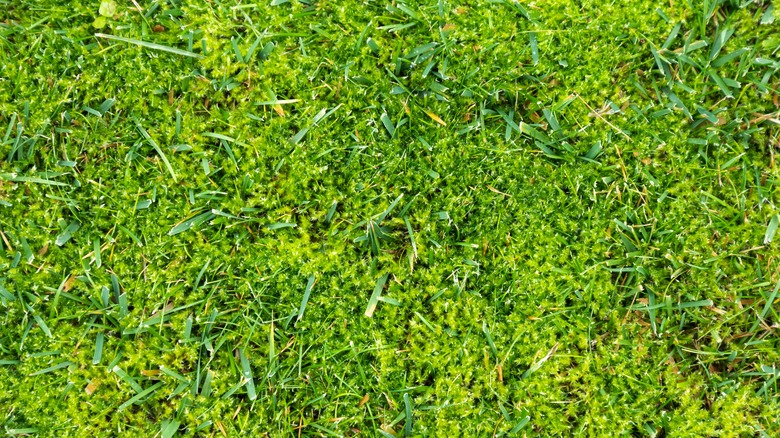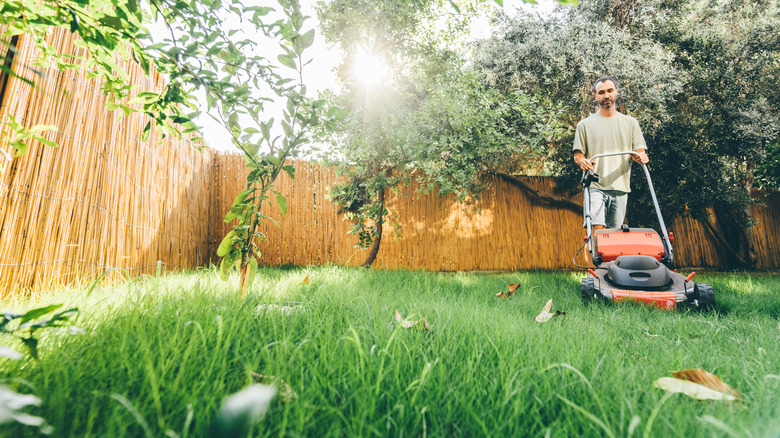The Simple Lawn Mowing Trick That Helps Prevent Moss From Taking Over Your Yard
Moss, in certain contexts, can be lovely. It can even bring a magical, fairytale-like quality to garden décor. However, one place most homeowners do not want to see moss is on their lawn. Moss isn't technically a weed, and it its presence won't kill your lawn. However, this opportunistic plant does harm by sucking up the moisture and nutrients from the soil, preventing it from reaching the grass — which can eventually lead to damaged or dead grass.
The presence of moss in your yard can tell you a lot about the health (or lack thereof) of your turfgrass. For example, if you see moss, it could be an indication there is a drainage issue due to excess moisture in the soil or that the soil itself might be too acidic. The appearance of moss on your grass may also be its way of telling you that you are going overboard with the mowing and clipping it too short. In fact, allowing your lawn to grow a tad longer is a simple trick to prevent it from becoming a huge problem.
Mowing your lawn too short compromises the health of the turfgrass. Since moss thrives wherever grass is vulnerable, maintaining your lawn's overall health will greatly diminish the likelihood of moss making itself at home in your yard. Grass that's allowed to grow slightly taller has healthier, deeper roots, and has less issues with moss and weeds.
How to correctly mow your lawn to prevent moss
If you're ready to get rid of moss in your lawn and stop it from coming back, here's how this simple mowing trick works. First, you will need to identify what type of grass you have and mow at its proper height. For example, bermudagrass can be cut to a height of one to two inches, whereas perennial ryegrass can be grown up to three inches. If you are not sure what type of grass you have, just keep it a little longer. In general, it's recommended to stick to a mowing height of two and a half to three inches, but you can even go as high as four. It's also a safe bet to follow the one-third rule, which says you never cut off more than one-third of the grass blade's height per mowing session.
Some additional tips include keeping your lawn mower blades sharp. You won't get a clean cut with dull blades, and it will leave grass vulnerable to disease and pests. Also, don't mow too often. Weekly mows are sufficient, but you can amp it up to two sessions a week when grass is growing quickly in mid-to-late spring. Of course, keeping your lawn the correct length is just one part of what should be a multi-pronged approach to moss prevention. You will also need to manage any conditions in your yard that may be favorable to moss growth, such as keeping up with soil quality and fertility. Be sure your lawn gets proper sunlight and not too much shade.

